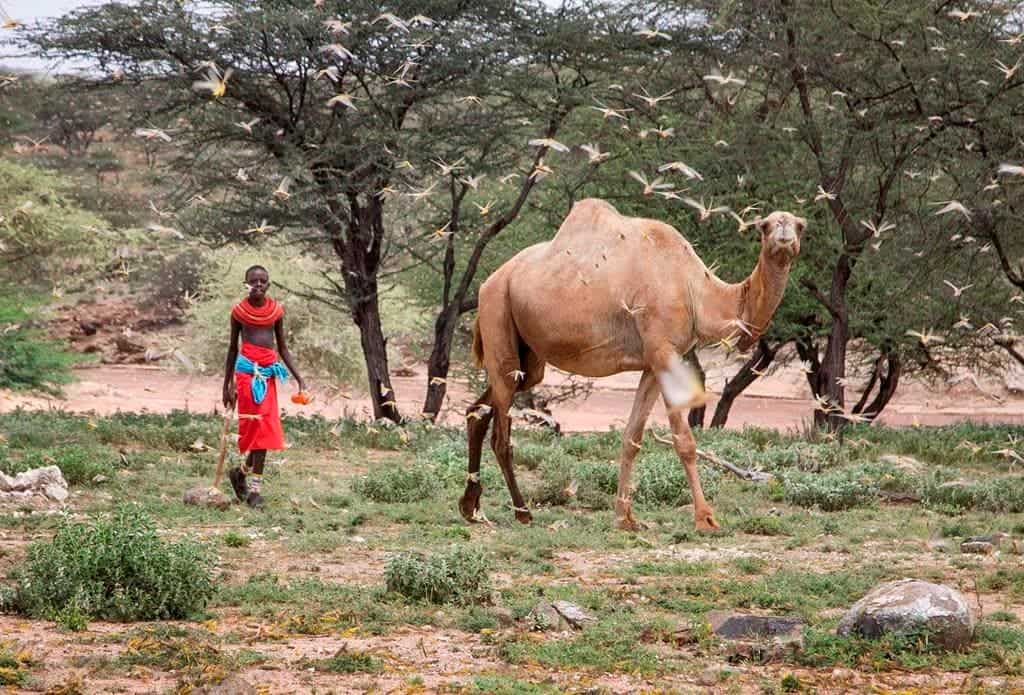Crops and livelihoods are being hit in large parts of East Africa by a plague of desert locusts, fueled by unusually warm weather. The swarms, carrying hundreds of millions of insects, are already affecting Ethiopia, Kenya, and Somalia, destroying vegetation from crops and pastures.

The swarms of desert locusts loom like buzzing dark clouds on the horizon, scouring the land in search for food. They are already affecting some of the world’s most vulnerable countries, such as Kenya and Somalia. Authorities are trying to contain the swarm, with limited success.
The Food and Agricultural Organization of the United Nations (FAO) said the outbreak could soon spread even further as favorable ecological conditions for the locust breeding will continue until June.
Despite not being currently affected, South Sudan and Uganda could soon be next.
“This has become a situation of international dimensions that threatens the food security of the entire subregion. FAO is activating fast-track mechanisms that will allow us to move swiftly to support governments in mounting a collective campaign to deal with this crisis,” FAO Director-General QU Dongyu said in a statement.
Neither Kenya nor Ethiopia had seen such massive swarms of locusts for over 25 years. The locusts are now spreading fast and heading toward Ethiopia’s Rift Valley, known as the country’s “breadbasket.” This could have severe consequences for food security all around the region.
While still looking at the reasons, the World Meteorological Organization said that widespread and heavy rains seen in East Arica since October have contributed to the explosion in locusts. Rainfall from October to November was 300% above average across the Horn of Africa.
The ability of a locust to survive largely depends on the weather. Female prefers to lay their eggs in sandy and moist soil as they need such moisture to fully develop. Once the eggs hatch, they also need fresh vegetation to survive – which explains why they target the crops.
The record rain registered in the region was mainly triggered by a shift in sea surface temperatures, called the Indian Ocean Dipole or “El Niño of the Indian Ocean.” This also caused a record amount of tropical cyclone activity in the North Indian Ocean, researchers argued.
“Unusually high rainfall in desert and savanna can definitely lead to blooms of rich vegetation that swarming insects like locusts will readily take advantage of,” AccuWeather Senior Meteorologist Jim Andrews said. “The climate across the affected areas varies from favorably moist to desert.”
The FAO has said that the locust swarms could grow to 500 times their current size by June if left unchecked. Rapid respond measures were recommended by international agencies, including aerial pest control so to slow the locust, the oldest migratory insect in the world.
There were warning signs, as FAO alerted back in November over the locust infestation in Ethiopia, claiming it would soon expand if it wasn’t managed. Farmers in the Amhara region of Ethiopia lost all their crops. Even a passenger plane was taken off course in Ethiopia last month because of a locust swarm.
“Prevention and control measures must be scaled up to contain further spread of the desert locust,” Workneh Gebeyehu, executive secretary of the Intergovernmental Authority on Development, said in a press release. “Countries must act urgently to avoid a food security crisis in the region.”


